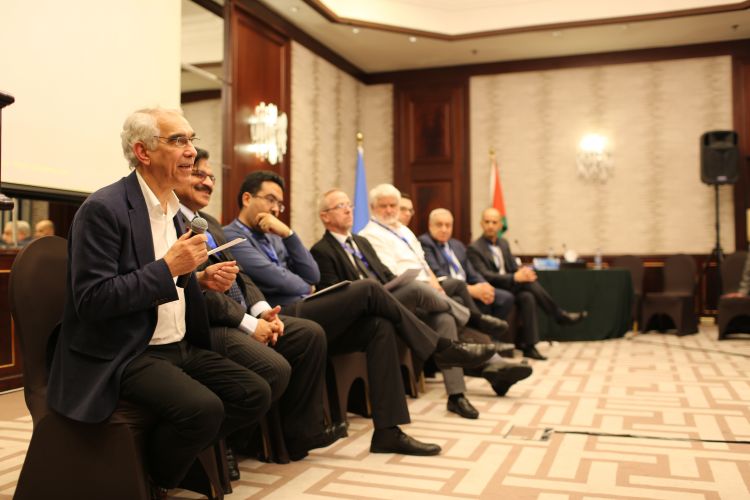 A panel of infectious disease specialists discusses the new strategic framework for infectious hazard management (Photo: Simon van Woerden/WHO)
A panel of infectious disease specialists discusses the new strategic framework for infectious hazard management (Photo: Simon van Woerden/WHO)19 December 2018 - From 16 to 19 December, nearly 100 infectious disease experts from Ministries of Health, the World Health Organization (WHO), and research institutes in the Eastern Mediterranean Region (EMR) and worldwide, convened in Amman, Jordan, to discuss, review and adopt the new strategic framework for prevention and control of emerging and epidemic-prone diseases drafted by the Infectious Hazard Management Unit (IHM) at WHO’s Regional Office.
The strategy, which will be owned by the Region’s member states and guide their efforts for the coming five years, comes at a crucial moment in time. Cholera, Dengue, Middle East Respiratory Syndrome, chikungunya, extensive drug resistant typhoid fever: the list of emerging and infectious hazards in WHO’s EMR is long, and it keeps growing. The new document will be key in protecting people in the region from these infectious hazards, guaranteeing the highest possible level of health for all.
Over the four days of the meeting, participants heard presentations on the status of different infectious diseases in the region, current global strategies for control and elimination of some of these diseases, and their relevance in the region; reviewed the draft strategic framework; and discussed the latest developments in prevention, preparedness, and response. On the final day, the framework document was unanimously adopted after incorporating some minor changes.
The document includes a clear vision, mission, and strategic guidance and plans for the four strategic axes which underpin them: strengthening public health preparedness for emerging infectious diseases; implementing high-impact prevention and intervention strategies; enhancing outbreak detection and response; and enhancing knowledge management.
The framework also includes a clear analysis of present and future challenges, which will help Member States to plan for and manage them, as well as a monitoring and evaluation framework that will allow countries to document and demonstrate progress, as well as any remaining gaps at the end of the five year strategic period.
Over the next years, Member States will take the lead in implementing the strategy, relying as always on WHO for technical, material and financial support in many areas, and working together across fields of expertise and national borders. Because a health threat anywhere, is a health threat everywhere.
The final text of the framework will be shared on IHM’s website.


